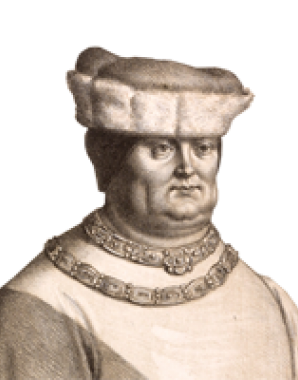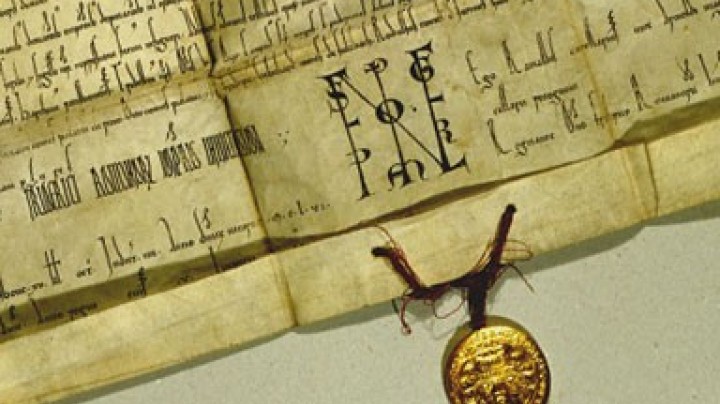Frederick III: marriage and offspring
Frederick died in seclusion in 1330, after his authority had also been challenged in Austria by his younger brothers – principally by Albrecht II, who had seized power for himself.
This luckless Habsburg was buried in the Charterhouse at Mauerbach which he had founded. When the charterhouse was dissolved in the course of the religious reforms of Joseph II his mortal remains were reburied in St Stephen’s Cathedral in Vienna.
He left behind his widow Elizabeth (Isabel) of Aragón (b. between 1300 and 1302–1330). The marriage had been arranged as part of an ambitious programme of creating blood ties with European royal dynasties. Elizabeth was the daughter of King James II of Aragón and Blanca di Napoli (Blanche of Anjou), who could look back on a proud line of ancestors including members of the Hohenstaufen dynasty and the emperors of Byzantium. Quite apart from the gain in prestige, the union was also financially advantageous. However, the exceedingly rich dowry was used up in financing her spouse’s struggle for the throne. Elizabeth survived her husband by only a few months.
The marriage resulted in three children. The only son Frederick (1316–1322) died while still a child. The elder daughter Elizabeth (1317–1336) also died at a young age before she could be married. The younger daughter Anna (1318–1343) was married first to Duke Henry XV of Lower Bavaria. After the latter’s early death she married Count John Henry of Gorizia-Istria, a union that was also only of brief duration. Now twice widowed, she entered the convent of the Poor Clares in Vienna, where she died as mother superior in 1343.













